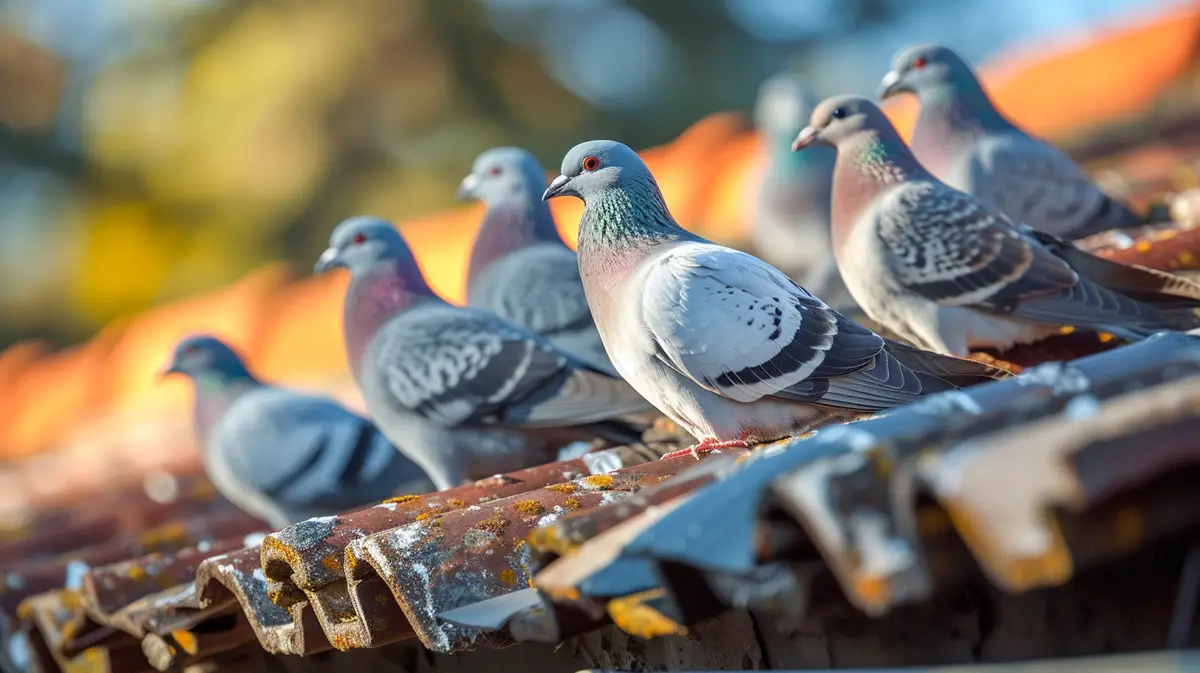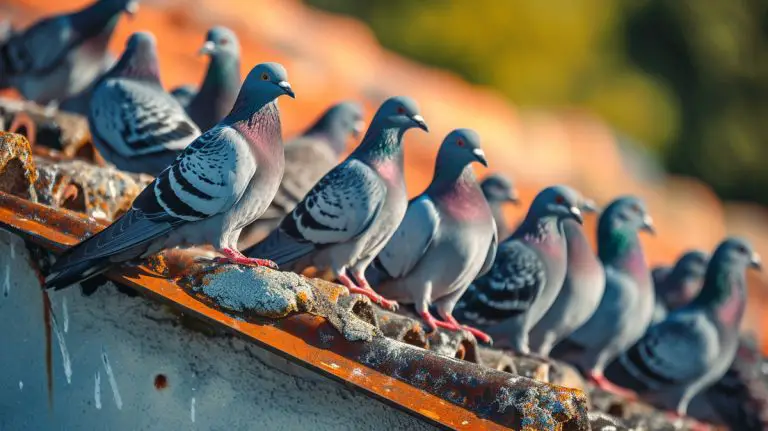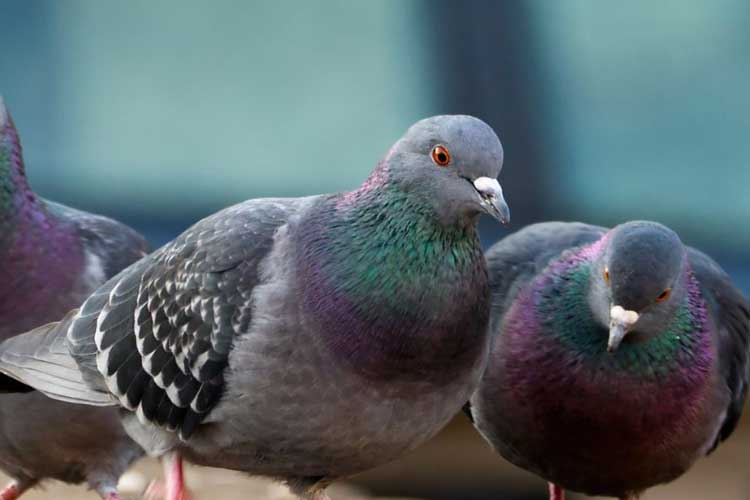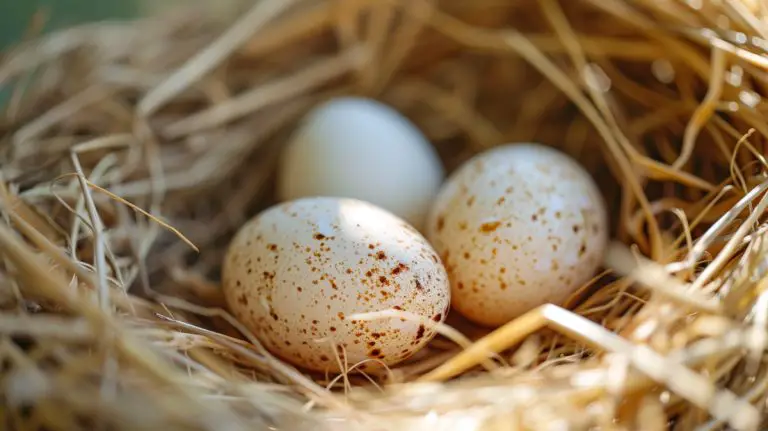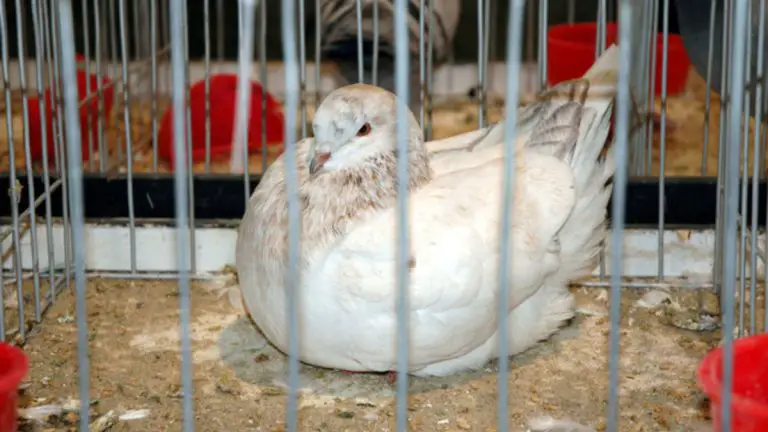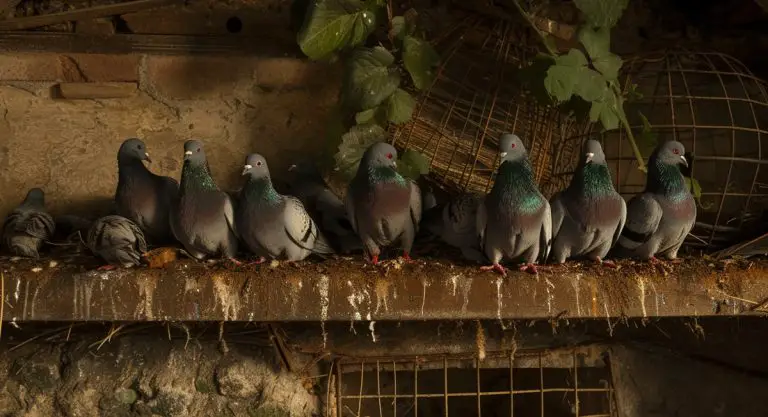Pigeon Sounds: Understanding Vocalizations for Behavior and Interactions
As a seasoned bird enthusiast, I have always been fascinated by the unique ways in which different species communicate. Pigeons, in particular, have a rich repertoire of sounds that they use to convey various messages and establish their presence in their surroundings. In this article, I’ll delve into the world of pigeon sounds and explore the different vocalizations these birds make.
When we think of pigeons, the first sound that comes to mind is their distinctive cooing. But did you know that pigeons have a wide range of vocalizations beyond just the familiar coo? From soft purrs to throaty grunts, these sounds serve different purposes, whether it’s attracting a mate, defending their territory, or communicating with their flock. Understanding these sounds can provide valuable insights into the behavior and social dynamics of these urban dwellers.
Join me as we unravel the mysteries of pigeon sounds and discover the fascinating ways in which these birds use their voices to navigate their world. From the rhythmic cooing that fills our city parks to the subtle nuances of their calls, we’ll explore the diverse soundscape of pigeons and gain a deeper appreciation for these often overlooked avian companions. So, let’s dive in and listen closely to the captivating sounds of the pigeon kingdom.
The Fascinating World of Pigeon Sounds
When you think of pigeon sounds, the familiar cooing noise is likely the first thing that comes to mind. But did you know that pigeons have a wide range of vocalizations beyond their iconic coos? These sounds serve various purposes and play a crucial role in how pigeons communicate with each other.
Pigeons are not limited to just cooing when it comes to expressing themselves. They have an array of other vocalizations that are equally fascinating. Let me take you on a journey through the intriguing soundscape of pigeon communication.
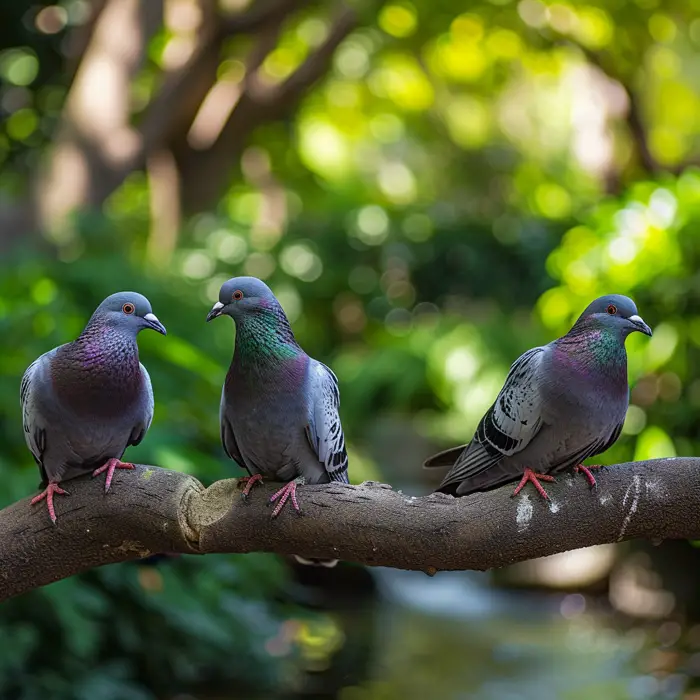
1. Soft Purrs: Pigeons often emit soft purring sounds, which are low-pitched vocalizations that resemble a gentle growl. These purrs serve as a form of communication between pigeons, conveying reassurance, affection, and a sense of calmness within the flock.
2. Throaty Grunts: Pigeons are notorious for their throaty grunts, which have an unmistakable guttural quality. These grunts often indicate dominance and aggression, and are used by pigeons to assert their territory and warn off potential intruders.
3. Wing Slaps: Have you ever heard the sound of wings clapping together? That’s what we call wing slaps. Pigeons produce this sound by rapidly flapping their wings in a repetitive motion. Wing slaps are often used during courtship displays, with males showcasing their virility and attracting potential mates.
It’s truly remarkable to see the range of sounds that pigeons can produce. Their vocalizations go beyond mere cooing and incorporate a spectrum of tones, pitches, and rhythms to convey different messages. As we delve deeper into the world of pigeon sounds, we begin to realize just how intricate and nuanced their communication system is.
Understanding the various sounds that pigeons make helps us gain a deeper appreciation for these incredible birds. As we observe and listen to their vocalizations, we can start to decipher the hidden meanings behind their calls. By honing our understanding of pigeon sounds, we can unlock the secrets of their behavior, relationships, and interactions with their environment.
So, the next time you encounter a pigeon, take a moment to listen to the sounds it makes. You’ll be amazed by the rich tapestry of communication that unfolds before your ears.
The Cooing Sound: More Than Meets the Ear
Pigeons are known for their distinctive and soothing cooing sound, but did you know that there’s more to this sound than meets the ear? As an expert in pigeon communication, I am excited to share with you the fascinating aspects of the cooing sound that you may not be aware of.

1. A Language of Love
The cooing sound is not just a random noise made by pigeons. It is actually an important part of their communication repertoire, especially when it comes to courtship. Male pigeons use their coos to attract females and establish their territory. It’s their way of saying, “I’m here, and I’m ready to mate!” So the next time you hear a pigeon cooing, remember that it’s the sound of love in the air.
2. A Vocabulary of Variations
Contrary to popular belief, not all pigeon coos sound the same. In fact, pigeons have a wide range of variations in their cooing sounds, each with a different meaning. Some coos are short and high-pitched, while others are long and low-pitched. These variations can convey different messages such as warning signals, greetings, or even expressions of contentment. It’s like a secret language spoken among pigeons.
3. Communication in Harmony
Pigeons are highly social birds, and their cooing plays a vital role in maintaining social harmony within their groups. They use their coos to communicate with other pigeons, establish hierarchies, and coordinate their movements. It’s a complex symphony of sounds that helps them navigate their shared environment and ensure their collective well-being.
4. Listening to Pigeon Conversations
Now that you know how important cooing is to pigeons, I encourage you to take a moment to listen to their conversations. Find a peaceful spot in your neighborhood or park, close your eyes, and let the soothing coos of pigeons wash over you. Observe the different tones and variations in their coos, and try to decipher the messages they are conveying. It’s an immersive experience that will deepen your appreciation for the rich tapestry of pigeon communication.
Beyond the Coo: Exploring Pigeon Vocalizations
When we think of pigeons, we often imagine their unmistakable cooing sound. However, there is so much more to pigeon vocalizations than meets the ear. As an expert in bird communication, I have had the privilege of studying these fascinating creatures and unraveling the complexity of their vocal repertoire.

- Growls and Rumbles: Pigeons aren’t just limited to cooing; they also produce growls and rumbles. These vocalizations are low-frequency sounds that can be heard over long distances. Imagine the deep rumble of thunder or the vibrations of a purring cat. Pigeons use growls and rumbles to establish dominance and mark their territory. It’s their way of saying, “This spot is mine!”
- Whistles and Cackles: In addition to cooing, pigeons also produce high-pitched whistles and cackles. These sharp sounds grab the attention of other pigeons and serve as alarm calls. They communicate possible danger or alert their flockmates to food sources. It’s like a bird version of shouting, “Hey, everyone, come check this out!”
- Bill Clapping: Picture two pigeons facing each other, their beaks coming together with a distinct clapping sound. This behavior is known as bill clapping, and it’s a form of communication during courtship displays. The rhythmic clapping serves as a love song, expressing interest and affection between potential mates. It’s their way of saying, “I’m interested in you!”
- Wing Clapping: Pigeons are known for their impressive ability to fly, and they even have a vocalization that accompanies their aerial acrobatics. Wing clapping is a rapid fluttering of the wings that creates a clapping sound. Pigeons use this behavior during dynamic flight displays to impress and attract a mate. It’s their way of saying, “Look at me, I’m strong and agile!”
Listening to pigeon conversations is like entering a whole new world of communication. Each vocalization carries a specific meaning, allowing pigeons to express their needs, establish social hierarchies, and coordinate their movements. So, the next time you hear a pigeon cooing, take a moment to appreciate the rich tapestry of sounds that make up their language.
Unlocking the Secrets: What Do Pigeon Sounds Mean?
Pigeons may be known for their distinctive cooing, but their vocal repertoire goes far beyond that. These birds have a range of sounds that serve various purposes in their communication. Let’s dive into the intriguing world of pigeon sounds and uncover their meanings.

The Language of Pigeons
Pigeons communicate through a complex system of vocalizations, using different sounds to convey specific messages. Here are some of the prominent pigeon sounds and their meanings:
- Cooing: The iconic cooing sound serves multiple purposes. It can be a way for pigeons to establish dominance, communicate territorial boundaries, or express contentment while feeding. Cooing can also play a role during courtship, as pigeons display their interest and attempt to attract mates.
- Growls and Rumbles: These low-pitched sounds are often associated with aggression. Pigeons may produce growls and rumbles to assert dominance, especially when defending their territory or during interactions with other pigeons.
- Whistling: Pigeons can emit high-pitched whistles, which may serve as an alarm call to alert others about potential dangers. These whistles can also be used as a way to communicate during flight, helping the flock stay together and coordinate their movements.
- Cackling: Pigeons sometimes produce a rapid series of cackling sounds. This vocalization is commonly associated with excitement or anticipation, especially when pigeons are approaching a food source or gathering in large numbers.
- Bill Clapping: Pigeons have the ability to create clapping sounds with their bills. This behavior often accompanies aggressive interactions between pigeons or during courtship displays. Bill clapping can be a way to assert dominance or attract the attention of potential mates.
- Wing Clapping: When pigeons take flight, their wings can create a distinctive clapping sound. This serves as a form of communication and can be used to signal excitement, coordination, or to establish their presence within the flock.
Appreciating Pigeon Language
Understanding the meanings behind pigeon sounds allows us to appreciate the complexity of their communication. By paying attention to their vocalizations, we can gain insights into their behavior, social dynamics, and interactions.
The Social Dynamics of Pigeon Sounds
When it comes to pigeon communication, their vocalizations play an essential role in establishing social dynamics within the flock. Understanding the meanings behind these various sounds can provide valuable insights into how pigeons interact and communicate with each other.
One of the most common vocalizations that pigeons use is the cooing sound. It serves multiple purposes, such as establishing dominance and attracting potential mates. When a pigeon coos, it’s a way of asserting its presence and letting other pigeons know that it’s there.

Another important sound in the pigeon’s repertoire is the growl. Pigeons use growls to display aggression and to assert their dominance over others. This vocalization is often accompanied by puffing up their feathers and lowering their heads to appear more intimidating.
Pigeons also produce whistles, rumbles, and cackles as part of their communication. Whistles are often used during courtship and are a way for pigeons to express interest and attraction. Rumbles and cackles, on the other hand, are used to mark territory and to alert other pigeons of potential dangers or available food sources.
In addition to vocalizations, pigeons also use non-vocal sounds to communicate. Bill clapping is a behavior where pigeons rapidly open and close their beaks, creating a distinct clapping sound. This behavior is often seen during courtship displays and can be a sign of excitement or attraction.
Lastly, pigeons engage in wing clapping, which involves rapidly flapping their wings to produce a loud clapping noise. This behavior is typically seen during flight displays and is used by male pigeons to impress potential mates.
To truly understand the social dynamics of pigeons, it is important to study and interpret their various vocalizations and behaviors. By understanding their language, we can gain a deeper appreciation for pigeons and their complex social structures. So, next time you hear a pigeon coo or growl, take a moment to listen and observe the intricate communication that is taking place among these fascinating birds.
Conclusion: Listening Closely to the Captivating Sounds of Pigeons
Exploring the world of pigeon vocalizations has been a fascinating journey. From their gentle cooing to their assertive growling, pigeons use a diverse range of sounds to communicate and establish their social dynamics. Each vocalization serves a unique purpose, whether it’s attracting a mate, marking territory, or alerting the flock to danger or food sources.
Understanding the language of pigeons provides us with valuable insights into their behavior and interactions. By listening closely to their sounds, we can decipher their intentions and better appreciate the intricate social structure within a pigeon flock.
Next time you encounter a group of pigeons, take a moment to observe and listen. Pay attention to their coos, whistles, and bill claps. By immersing yourself in their world of sounds, you’ll gain a deeper appreciation for these remarkable birds.
So, let’s continue to explore the captivating sounds of pigeons and uncover the secrets that lie within their vocalizations. By doing so, we can enhance our understanding of these fascinating creatures and the role they play in our urban environments.
